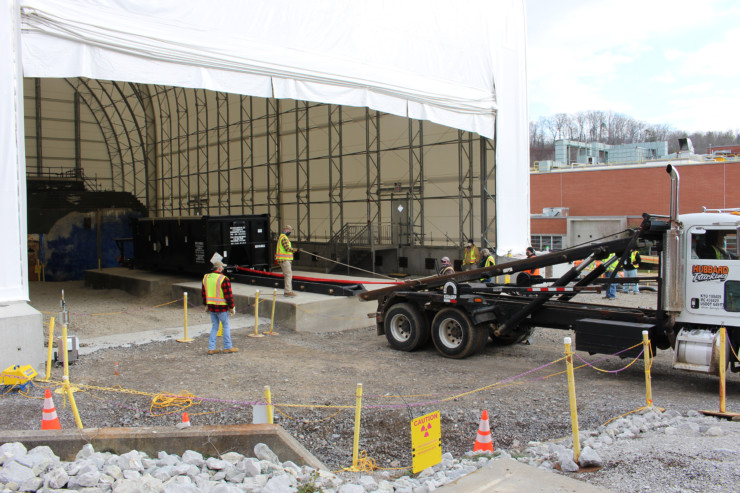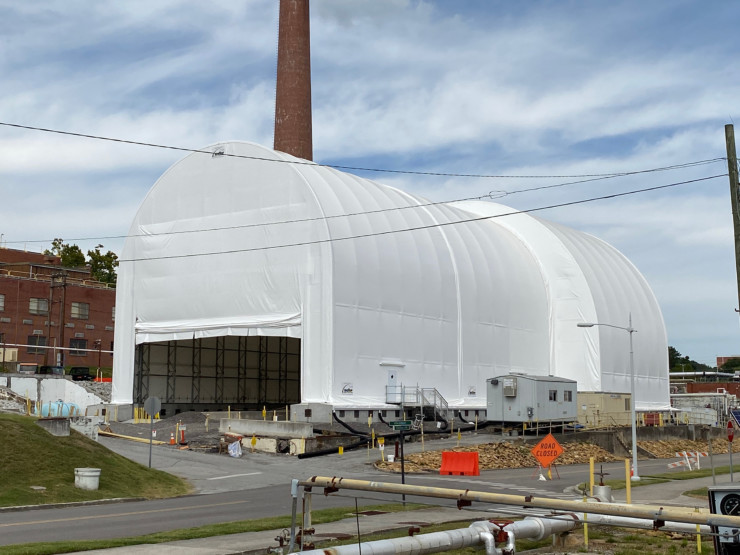
Demolition work at a former radioisotope laboratory in Oak Ridge could be complete this spring.
The U.S. Department of Energy Oak Ridge Office of Environmental Management and UCOR announced earlier this year that UCOR, a contractor, had begun removing the two remaining structures at the former Radioisotope Development Lab at Oak Ridge National Laboratory.
“This project launches our next phase of major demolition and cleanup at ORNL,” said Nathan Felosi, OREM’s portfolio federal project director for ORNL. “Our work is eliminating contaminated structures, like this one, that are on DOE’s list of high-risk facilities and clearing space for future research missions.”
Known as “hot cells,” the structures being demolished are heavily shielded concrete rooms that provided researchers protection from highly radioactive material during the years the laboratory was operational, a press release said.
The laboratory dates back to the Manhattan Project and postwar era, when one of the facility’s primary missions was the production of radioisotopes for medical, research, and industrial uses. Constructed in the early 1940s, the laboratory contained six hot cells where radioisotopes from ORNL’s Graphite Reactor and succeeding reactors were processed for shipment, the press release said.

The outer structure and four of the hot cells were demolished previously using funds from the American Recovery and Reinvestment Act of 2009, the press release said.
UCOR completed several tasks to prepare the final structures for demolition. Workers eliminated contamination pathways, which involved pumping and grouting a 47-foot-long underground transfer tunnel formerly used to load radioactive material into the hot cells.
The cleanup contractor also constructed a six-story protective cover over the hot cells to ensure nearby research facilities were not affected during the demolition. Using a 175-ton crane, crews set a foundation of 92 16,000-pound blocks. Workers then used the crane to erect 20 steel trusses for the frame, and they added nearly 12,000 square feet of fabric to complete the protective cover, the press release said.
Crews also constructed an intermodal rail system to transport boxes containing demolition debris from the site, the press release said. The system provides a safe way to transport the debris outside of the space-limited tented area. The boxes are then loaded onto trucks and transported for disposal.
“Removal of these hot cells is the first major demolition project associated with the environmental cleanup activities beginning to ramp up at ORNL,” UCOR Project Manager Susan Reid said. “UCOR is proud to be part of this effort, working in collaboration with ORNL to remove unneeded facilities and facilitate the site’s expanding science missions.”

Leave a Reply